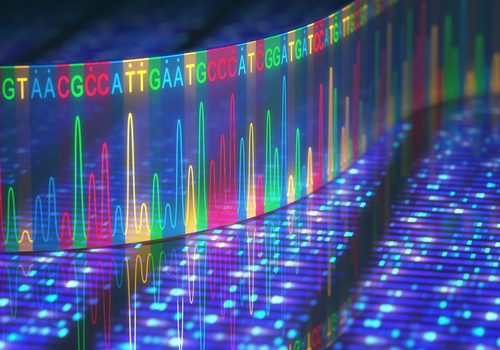Specific Mutation of GLA Gene Promotes Late-Onset Fabry Disease, Study Finds

A specific genetic mutation of the GLA gene results in the development of atypical late-onset Fabry disease, a study found.
The study, “Phenotype and biochemical heterogeneity in late onset Fabry disease defined by N215S mutation,” was published in Plos One.
Fabry disease is caused by genetic mutations affecting the GLA gene, which provides instructions for making an enzyme called alpha-galactosidase A, or α-Gal A. This results in insufficient activity of α-Gal A, which leads to the accumulation of a type of fat known as globotriaosylceramide (Gb3) and its variant form lyso-Gb3.
More than 900 mutations of the GLA gene have been described in the disease. Depending on the type of mutation, patients may present different levels of the α-Gal A enzyme and consequently a variable buildup of Gb3 and lyso-Gb3. This directly impacts disease symptom onset and severity.
One particular mutation identified as N215S has been shown to promote the reduction of α-Gal A activity by 5% to 25% of normal levels, causing an atypical form of Fabry disease where patients lack the common clinical symptoms associated with the disease.
Patients with the N215S mutation may be asymptomatic or exhibit mild symptoms affecting only one organ, frequently the heart, later in life.
To better understand the impact of the N215S variant, University College London researchers evaluated the clinical manifestations and outcomes of 251 patients with Fabry disease, 84 of whom had this specific mutation, including two women.
These patients were significantly older when symptoms appeared, with a mean age at symptom onset of 57 years compared with 9 years in patients with other GLA mutations.
Age at the time of diagnosis was also significantly different, with N215S patients having a median age of 58 years compared with 23 years in other Fabry patients.
Patients with the N215S mutation experienced mostly late-onset cardiac manifestations, including chest pain and palpitations or heart alterations that were incidentally detected in pre-operative or standard evaluations. Only two patients showed earlier-onset kidney symptoms.
In contrast, for most patients with other genetic mutations, the most common initial symptoms were skin lesions (angiokeratoma) and tingling/numbness of the extremities.
Despite differences in age at onset and symptoms, the severity of manifestations at the time of diagnosis was similar between the two groups.
N215S carriers were found to experience cerebrovascular, renal, and cardiovascular events later in life than other patients. Importantly, they survived longer.
Lyso-Gb3 was found to be less elevated in N215S than in non-N215S male and female patients. However, the N215S population eventually reached an overall severity similar to non-N215S patients without equivalent elevation of lyso-Gb3 levels.
“Patients with the N215S mutation exhibit a distinct phenotype with later onset but not exclusively cardiac manifestations, with some patients presenting with renal disease. … Lyso-Gb3 is an important parameter in the assessment of patients with the N215S mutation. Severity and clinical manifestations correlated with life time exposure to plasma lyso-Gb3 in the N215S group and may prove useful in prognostication and therapeutic decision making,” researchers wrote.






